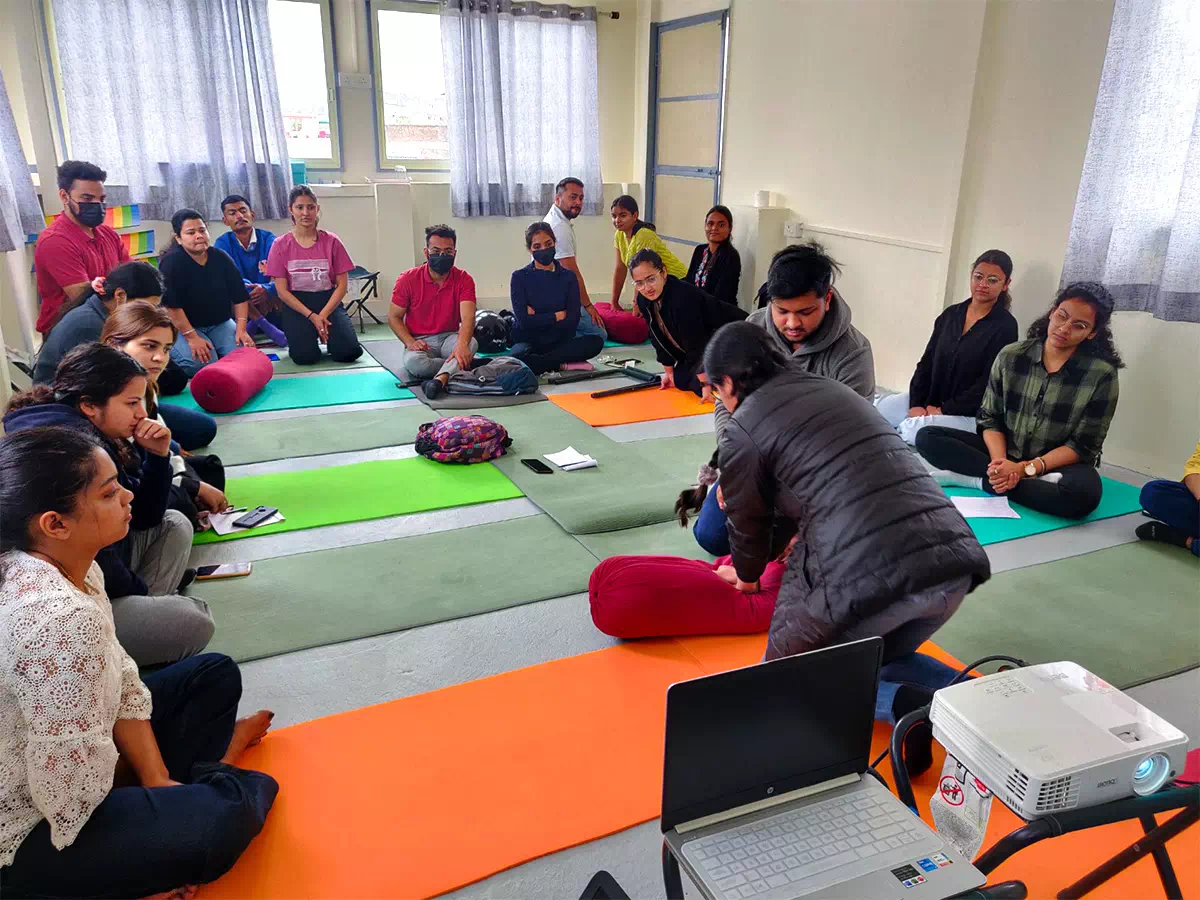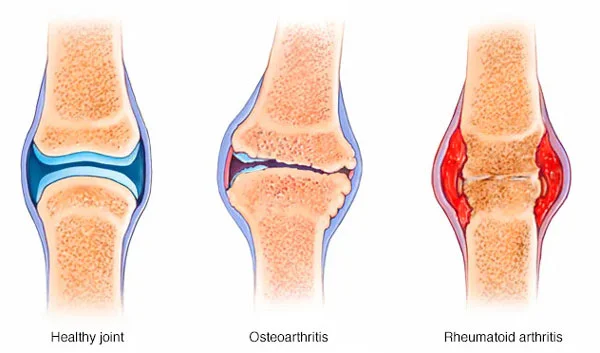Introduction
Information overload comes in the way whenever people have to talk of any form of cerebral palsy, the condition associated with neuromuscular disorder. But here is good news: there is a reason to look forward to brighter days, for there are plenty of treatment options available for cerebral palsy in India. And yes, more and more people are seeking professional therapies, which are available today in order to ease the suffering and enhance the quality of life. Cerebral palsy (CP) affects movement and coordination; however, these deficits can be effectively treated with the right treatment. Physiotherapy has dramatically changed the situation in India, and places like Himalayan Physiotherapy in Dehradun have pioneered this trend and provided the best cerebral palsy treatment in India.
So, how does treatment for cerebral palsy work? Is it only about seeing doctors and taking medication? Not exactly. There is much more to it, especially when dealing with physiotherapy. This post will guide you about the available options for treatment and how Himalayan Physiotherapy is among the best places to seek help, especially for the treatment of cerebral palsy in India.
What is Cerebral Palsy: A Detailed Understanding
Let’s start from the basics. Cerebral palsy is a broad term for a group of disorders that impair movement and muscle tone, most commonly due to a brain injury that occurred before, during, or shortly after a child’s birth. The consequences of cerebral palsy can vary dramatically, some individuals may experience relatively minor difficulties in movement while others have gross difficulties resulting in many aspects of their life being more affected.
So now, here is the good part: there is hope for individuals with cerebral palsy as treatment options are increasing, and the pace of development for cerebral palsy treatment in India is high. With the development of physiotherapy, individuals affected by Cerebral palsy are becoming self-sufficient and experiencing life to the fullest.
If you find yourself in Dehradun or in its general vicinity, it is worth considering Himalayan Physiotherapy. Their specialists focus on developing individualized approaches to treatment for every specific patient.
How Does Physiotherapy Help in Cerebral Palsy Treatment?
Why physiotherapy? You might ask. Well, while there isn’t a single ‘cure’ for Cerebral palsy, physiotherapy is certainly among the most effective ways of ‘containing’ the symptoms and disability associated with it, especially when undertaken together with other treatment modalities.
Physiotherapy contributes to the improvement of movement, strength, flexibility, and balance, which is almost everything that is affected by cerebral palsy. At Himalayan Physiotherapy in Dehradun, physiotherapists utilize modalities aimed at making the movements ‘easy-going’ and less load-bearing.
Even for simple activities like muscle strengthening or stretches and coordination exercises, physiotherapy does help. These sessions make the complex and risk-prone activities, like walking, hardly ‘a big deal’. Or make ‘lifting’ seem simple and most of all safe.
What does a Pediatric Physiotherapist do?
A Pediatric physical therapist is very essential in the full recovery process of a child after an operation. They work with children suffering from conditions such as delayed development and sports injuries among others. Amongst many other such places, Dehradun has some great physiotherapists with Himalayan Physiotherapy having the best physiotherapist in Dehradun, who offer empathetic care proven to show results.


What Makes Himalayan Physiotherapy Special?
With many centers giving cerebral palsy treatment in India, what is special about Himalayan Physiotherapy? Here are examples:
Experienced Team: Typing ‘the best physiotherapists in Dehradun for cerebral palsy’, will gain most results centered around physiotherapy, but for those with a designated interest in cerebral palsy, Himalayan Physiotherapy offers the best facilities and treatment. The majority of the team has worked for a decade with patients with cerebral palsy and possesses knowledge that a family physician may not have.
Holistic Approach: Cerebral palsy affects much more than physical movement. The team at Himalayan Physiotherapy treats the whole person, helping with posture, mobility, and even advice on daily habits and nutrition.
Modern Facilities: From hydrotherapy pools to the latest neuromuscular equipment, Himalayan Physiotherapy’s clinic is equipped with top-notch resources to support effective treatment.
Compassionate Care: Where they differ from the rest is their approach of placing the patient at the center of everything they do. Every person has their own difficulties and their own objectives, and so the team works alongside each patient to construct a customized plan, allowing them to feel support at every stage.
Types of Therapies at Himalayan Physiotherapy
In the course of this article, we will review therapies available at Himalayan Physiotherapy which can prove beneficial for cerebral physiotherapy:
Neurodevelopmental Therapy (NDT): This technique assists the brain in learning new and improved movement patterns. It is mostly useful for children but adults can also show good results with it.
Constraint-Induced Movement Therapy (CIMT): By immobilising the unaffected limb, this approach forces the weaker side to be activated and thus makes the brain shift to using the weak limb more often.
Aquatic Therapy: Water therapy is a gentle way of building strength and coordination, especially in cerebral palsy patients who may find it difficult to perform strenuous exercises.
Electrical Stimulation: Misconceived as painful, small electric impulses in the muscle tissue make them contract, which can facilitate improvement in power and reduce muscle tension.
Choosing the Right Physiotherapist for Cerebral Palsy
Let us assume you typed in the word “physiotherapy near me” in your browser and the first link you clicked was that of Himalayan Physiotherapy in Dehradun. What makes this place ideal for you?
When it comes to cerebral palsy, it is important to seek a clinic that is well experienced in dealing with cerebral palsy patients. The clinic stands out for patient assessments reaching into detail and specific knowledge of cerebral palsy and this targeting of the needs of patients and the goals for progress is carried out in the plans provided.
Why Dehradun? Why Himalayan Physiotherapy?
Some might wonder, “Why travel to Dehradun for treatment?” Aside from being a beautiful city, Dehradun brings its own charms to the patients as it is a soothing place that can actually be helpful in the healing process. What is ideal about this city is that at Himalayan Physiotherapy, you receive the necessary intensive care as well as a caring environment which can be supported by the nature of the city.
A New Beginning: New Life
Cerebral palsy does have its fair shares of struggles in one’s life but with the right treatment, anything is possible. Physiotherapy presents a way to regain movement, improve limb control, achieve independence, and most importantly ensure a satisfying and fulfilling quality of life. The entire staff at Himalayan Physiotherapy Dehradun takes pride in being there with you while simultaneously providing the knowledge and sympathy you require.
So if you or someone you know is looking for options for cerebral palsy treatment in India, then there is no reason why Himalayan physiotherapy would fail in your expectations. If it is a female physiotherapist you seek or a good quality physiotherapist in Dehradun, the team is always happy to help you at the very first step.
The Road to Recovery:
When it comes to slip disc, it is not a process that can take a day or a week of treatment and all the backache is gone, but a process that demands commitment and patience. Here’s what you can expect during your treatment journey at Himalayan:
Initial Assessment: This is the first session where you also would complete some forms, after which you would undergo a complete medical examination. This enables the physiotherapist to have a clue about the seriousness of your condition before developing a targeted plan.
Therapy Sessions: Based on your condition, you will need to attend physiotherapy sessions, which entail the use of some techniques that are applicable in the management of pains and improving your mobility. Your physiotherapist will also advise you on some exercises that you could do at home, adding to the process of recovery.
Ongoing Support: Recovery doesn’t end when your pain subsides. The team at Himalayan Physiotherapy will provide you with long-term strategies to maintain your spinal health and prevent recurrence. This may include guidance on posture, lifestyle changes, and ergonomic adjustments at work and home.
Monitoring Progress: Your response to treatment will also be closely observed while going through your treatment. Any modifications that would need to be applied to your treatment will be implemented, and you will be guided on how to go about it to ensure that you have the best chance of getting better.
Preventing Slip Disc: Tips for a Healthy Spine
Prevention is always better than cure, and there are several steps you can take to reduce your risk of developing a slip disc:
Practice Good Posture: Regardless of whether people are in a sitting, standing, or lifting position, the right posture has to be observed to compromise the spine in any way.
Exercise Regularly: Teaching controlling muscles of the spine through exercises such as yoga, Pilates, and intensive gyms that concentrate on the core muscles would help to prevent slip discs.
Lift Heavy Objects Properly: As a matter of fact, it is usually recommended that one should always bend his/her knees and ensure that the back part of the body is straight when lifting any heavy load off the ground. Do not rotate your body while lifting.
Maintain a Healthy Weight: This is true as obesity, and more so abdominal obesity, charges pressure on the spinal cord where a slip disc is usually full of nerves.
Quit Smoking: The nicotine in cigarettes narrows the blood vessels and blood supply to the spine, and when there is a pull on the lower back, the individual is likely to develop a slip disc.
Conclusion
Himalayan physiotherapy in Dehradun is synonymous with hope, healing, and comprehensive care solutions. If you or your loved one is afflicted with cerebral palsy and are looking out for its treatment, stop right here. Bringing in trust in the exceptional, kind and innovative care that is found at Himalayan Physiotherapy will place you well along the quest towards regaining good health.
“The Concept of Brain plasticity”
Do you know that a child’s brain is highly plastic?
No! Not that plastic you use as a bag!
It means that it can be molded and reshaped by new synaptic connections which is also known as Neuroplasticity or Brain Plasticity. In this context Pediatric rehab exploits this attribute using well designed activities and exercises that facilitate brain development while promoting recovery. Similarly, the ability to adapt and acquire new skills explains why early intervention works very well. Fact Mania
FAQs
A: Yes! With advancement of human knowledge and technology, there are several treatment options to treat cerebral palsy. Physiotherapy is one of these effective treatment options and promises great results. If you are looking for a great physiotherapy center in Dehradun, Himalayan Physiotherapy stands out for many reasons.
A: A brain scan is required to identify the sign of cerebral palsy. A medical consultation with the speciality will confirm the disease.
A: The simple answer is, Yes! We have witnessed results and tremendous improvement among patients with cerebral palsy in a matter of a few months of physiotherapy. To avail the best cerebral palsy treatment in India, contact Himalayan Physiotherapy in Dehradun.
A: The symptoms occur in three different aspects, muscular, speech, and developmental. The patient might face difficulty in walking, muscle rigidity, floppy limbs, impaired speech, slow growth, etc.
A Great Place Of Medical Health Care
Proper exercise act as a lubricating mechanism for the joints, muscle, ligament, tendon, and other parts of the body, by increasing circulation and flexibility.The fundamental difference between the ancient wisdom of Yoga into 5 basic principles that physical exercise emphasizes the violent movements of the muscles, while Yogic exercises promote slow and conscious movements of the body.


















